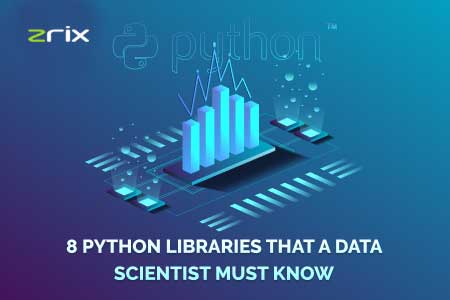Introduction
The landscape of programming languages is fast-evolving. Python stands out in it. It is a beacon of versatility, simplicity, and robustness. It rose to prominence for good reasons. These reasons are its qualities and the changing needs of the digital era. Python is the ranks to become one of the most popular programming languages in the world. But what makes it such a strong contender for the future?
Let's dive into some of the key features that position Python for continued success:
Table of Content
Wide Adoption and Familiarity
Python's versatility is unparalleled. It's a language that wears many hats, serving a plethora of purposes across various domains. Python is at the heart of many applications. They range from web development to data science. They range from machine learning to AI. It's also key in scientific computing and automation. Its large standard library and many third-party packages make it adaptable to any task.
They simplify development and speed up innovation. One of Python's greatest strengths is its versatility. It can be used for a wide range of applications, including web development, data science. Machine learning, automation, and scientific computing. This allows developers to use one language across various projects. Streamlining workflows and boosting productivity.
Beginner Friendly
Python's syntax is known for its readability, resembling plain English. This makes it much easier for beginners to learn programming. It's compared to languages with complex syntax. This ease of learning creates a bigger pool of more diverse programmers. It ensures a strong talent pipeline for the future.
Python syntax
Python's syntax is elegant, concise, and easy to read. It resembles natural language. This simplicity boosts developer productivity. It also helps newcomers get started. The clean and intuitive syntax of Python encourages collaboration, facilitates code maintenance. Reduces the likelihood of errors, choice for both beginners and seasoned developers alike. Being open-source, Python is free to use and change. This fosters a collaborative community of developers who contribute to the language's improvement. This innovation never stops. It keeps Python current with the latest tech.
Community and Ecosystem
Python boasts a vibrant and inclusive community that fosters collaboration, knowledge-sharing, and continuous. This global network of developers contributes to an ever-expanding. Ecosystem of libraries, frameworks, and tools that enrich the Python experience. Whether you're seeking support, documentation, or inspiration, the Python community provides.
A welcoming environment for developers of all backgrounds and skill levels. Python boasts a vast and ever-growing ecosystem of libraries and frameworks. These pre-written code collections provide developers with available tools for specific tasks. From machine learning (TensorFlow) to data analysis (Pandas) and web development (Django). there's a Python library to simplify almost any development need.
Data Science and Machine Learning
Era of big data and artificial intelligence, Python has emerged as the de facto language for data science and machine learning. Its extensive libraries such as NumPy, Pandas, Matplotlib, and scikit-learn. Empower data scientists and machine learning engineers to analyze, visualize. Model complex datasets with ease. With the rise of deep learning frameworks like TensorFlow and PyTorch. Python continues to lead the way in cutting-edge AI research and development.
Cross-platform Compatibility
Python's cross-platform compatibility ensures that code written. Python can run across different operating systems, including Windows, macOS, and Linux. This portability makes Python an attractive choice for developing cross-platform applications. Ensuring largest reach and accessibility for users regardless of their preferred platform.
Scalability and Performance
Contrary to popular belief, Python is not a prototyping or scripting language. It's also capable of powering high-performance, scalable applications. By leveraging techniques such as optimization, concurrency and parallelism. Python can deliver impressive performance in demanding use cases. Additionally, advancements like Just-In-Time (JIT) compilation and specialized libraries. further enhance Python's capabilities speed and scalability.
Industry Adoption and Demand
Python's widespread adoption across industries is a testament to its relevance and staying. tech giants like Google, Facebook, and Amazon to startups and enterprises of all sizes. Python is the go-to choice for building robust, scalable, and maintainable software solutions. As the demand for Python developers continues to surge, mastering. Python opens up abundant career opportunities and ensures long-term relevance in the job.
Focus on Readability
Python's emphasis on clean and readable code makes it. Easier for developers to maintain and collaborate on projects. Well-written Python code is easier to understand. It's not just for the original programmer but also for others on the team. This cuts errors and speeds up development.
Conclusion
Python's versatility, simplicity, community support, dominance in data science. Machine learning, cross-platform compatibility, scalability, performance. Industry adoption position it as the programming language of the future. Whether you're a beginner embarking on your coding journey or an experienced developer. Navigating the ever-changing landscape of technology. Python is a language worth mastering for the exciting opportunities that lie ahead.
No language is guaranteed eternal dominance. But, Python's strengths position it well for a bright future in the ever-changing world of programming. It is easy to use. It is versatile and has a vast ecosystem. It focuses on readability. These traits make it valuable for both beginners and seasoned programmers. As technology continues to develop, Python is likely to remain a major player, adapting and innovating to meet the demands of the future.




